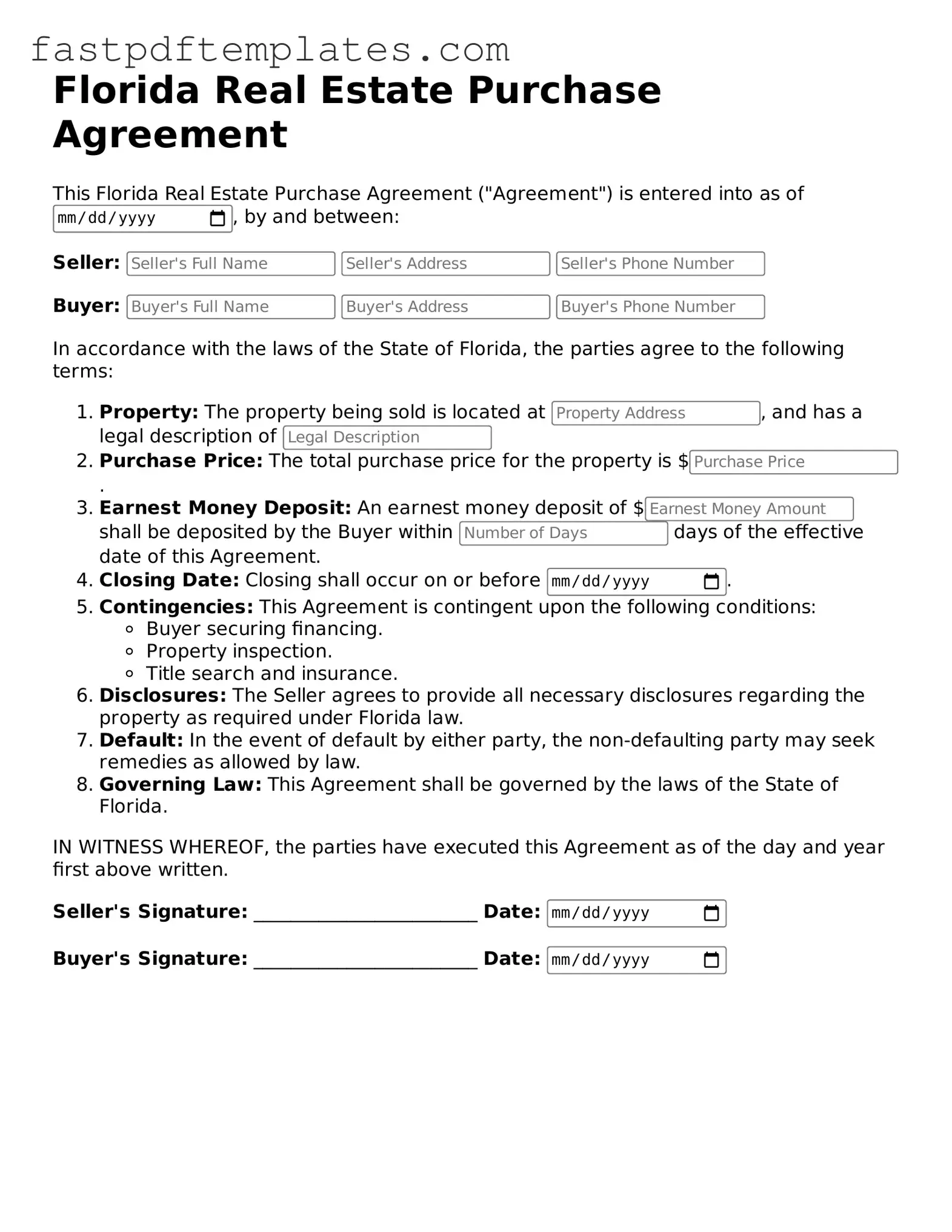The Florida Real Estate Purchase Agreement form shares similarities with the Residential Purchase Agreement. Both documents serve as a formal agreement between a buyer and a seller for the purchase of residential property. They outline essential details such as the purchase price, financing terms, and contingencies. Each agreement also includes provisions for inspections and disclosures, ensuring that both parties are protected throughout the transaction process.
Another document that resembles the Florida Real Estate Purchase Agreement is the Commercial Purchase Agreement. While tailored for commercial properties, it includes many of the same fundamental elements, such as price and terms of sale. The commercial version often addresses unique considerations like zoning laws and business licenses, but both agreements aim to clearly define the responsibilities of the buyer and seller.
The Lease Purchase Agreement is another similar document. This agreement allows a tenant to lease a property with the option to buy it later. Like the Real Estate Purchase Agreement, it specifies the purchase price and terms. However, it also outlines the duration of the lease and conditions under which the tenant can exercise the purchase option, providing a pathway for renters to become homeowners.
The Option to Purchase Agreement also parallels the Florida Real Estate Purchase Agreement. This document gives a buyer the exclusive right to purchase a property within a specified timeframe. While it does not serve as a final purchase agreement, it establishes the purchase price and terms, similar to the Real Estate Purchase Agreement, allowing buyers to secure a property while they finalize their decision.
The Seller Financing Agreement is another related document. In cases where the seller agrees to finance the buyer's purchase, this agreement outlines the terms of the loan, including interest rates and payment schedules. While it focuses on financing rather than the sale itself, it often accompanies the Real Estate Purchase Agreement, ensuring that both parties understand their financial obligations.
Lastly, the Counteroffer form has a close relationship with the Florida Real Estate Purchase Agreement. When a seller receives an offer that does not meet their expectations, they may issue a counteroffer. This document outlines the revised terms and conditions while referencing the original purchase agreement. It plays a crucial role in negotiations, allowing both parties to communicate their needs and reach a mutually agreeable deal.
